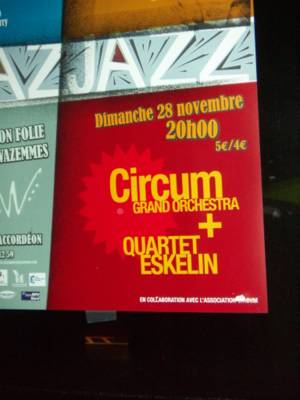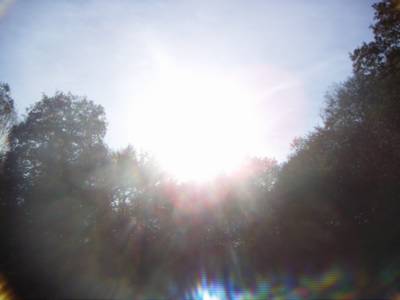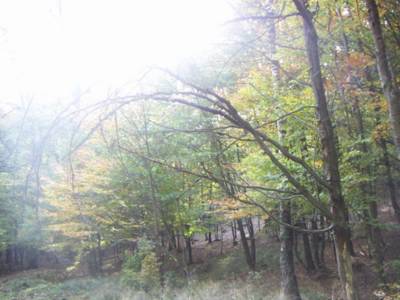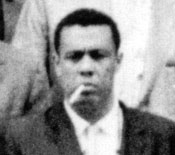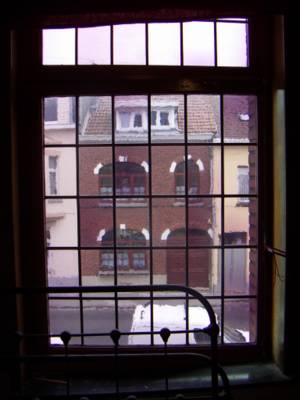Waffling
I had been that way earlier in the day. It was colder now, so I stopped to get a waffle at the Belgrafrau stand on the no-man's street separating the beginning of the Rue Neuve from Place De Brouckère. It cost 1.65€, roughly the price of a bus ticket.
I don't know what those waffles are called. Chewy, with big squares and the size of two palms, it could have been topped with cream or chocolate. As usual, I took mine plain. There are also the thin brittle ones, a particularly delicious honey-filled varition of which can be found in Hema stores. Waffles, like French fries wrapped in a thick paper cone (or, less poetically, laying corspe-like in a plastic tray), connect you to the city. Its fast-fading warmth shielded me from the winter's early-evening chill, while metaphorically it drew Brussels closer. The wild neon illumination that somehow made the blackness of the night sky more vivid and present; the well-rehearsed progression from the UGC multi-mega-complex on the Place, up through Boulevard Adolphe Max's parade of unhelpful temping agencies and onto the final, ignominious stretch of pornland shops, cinemas and performance spaces that stop, meekly, at the junction with the broad and busy entanglement of the Boulevard du Jardin Botanique, the weirdly "Metropolis"-like quality of the CBD surrounding the Gare du Nord, the far-off white City Hall spire overlooking the Grand-Place, all of it became intimate.
Across the street from the smut stands the Brussels Sheraton and the glass pyramid that pales absurdly in comparaison with its Parisian forebear. Parallel to Adolphe Max runs a parallel world, the Rue Neuve, as swanky as a populist high street can get and remain in business: Zara is surrounded by multiple H&Ms; coming from the Sheraton, the ATMs of Fortis Banque greet consumers; at the other end of the street, Women's Secret bids them farewell.
I wasn't taking the entire tour this time. I needed only to go to Waterstone's to compare prices for Bob Dylan's "Chronicles." I had been wandering the aisles of the Dutch-language Standaard Boekhandel in search of a present for J... He's a Dutch teacher and generally gets books when a present is needed. I don't know his level of affinity for Dylan (if any), but thought it might be nice to get some lighter fare. Since his English is good, the 20€ Dutch translation was redundant. In a just-discovered English-language bookshop, large, but cluttered and exuding an air of small-scale conviviality, a nice counter-weight to the world-conquering indifference of Waterstone's and some fifty metres up from the Belgafrau, the book was 30€. As it turned out, Waterstone's had it at the same price. It remains a mystery to me how a translation of a new book can be cheaper than the original version. I ended up not getting anything. Reading the first few pages of "Chronicles" was exciting: it was about Dylan, but it could have been a work of fiction, which is good for the Dylan-ignorant such as myself and for those who want to offer it to someone of unknown Dylan status; the words "hophead talk" reminded me of "On the Road"'s ambiance.
Last week I went to see The Roots for the sixth time, at the Ancienne Belgique on Boulevard Anspach, De Brouckère's lower-class extension and the place to go to buy cheap computers. The following day, my daily commute partner called the AB the smallest venue he'd been to. I called it, perhaps incorrectly, the largest, which revealed to me how ignorant I am of the marginality of my musical experience.
Well over a year ago I had seen them from the balcony of the same room. This time I was down amongst the plebes and enjoyed myself more because of it. As I walked in, they were already onstage, playing "Boom!" The Roots have become an unabashed guitar(s, two, to be exact) band, and most of The Tipping Point's somewhat stilted songs were all the better for it. Energy, distortion, re-arrangement and facile volume did the trick. The sword swang the other way on "Why?" as the desultory guitar strumming that accounts almost entirely for the song's despondant atmosphere was drowned out by amorphous volume-induced parasites. In fact, it was probably the loudest concert I've ever been to: for the next few days the ringing in my ears caused interferences when I whistled, which sounds begnin but is in reality rather scary.
There were transistions from "Iron Man" to "Crazy In Love," the insertion of a half-Nirvana, half-Led Zeppelin riff into a TTP song, a reggae "You Got Me," a very fast "The Seed 2.0," what sounded like an aborted segue into "Drop It Like It's Hot," and so on. Singer Martin Luther again had his own section, but instead of the moving voice 'n' guitar of the previous concert, Luther's full-bodied and masculine soul voice was indentured to labourious group songs (with Knuckles moving from percussion to traps, a female bassist materialising from the wings and the lead guitarist). The concert's high point was an unexpected outbreak of pure funk. My first thought was "I need them to play this at my wedding." Of course, this thought surfaced only after several minutes, as the ancestral reptilian brain reflex of "Dance, fool" had taken over and shut down the higher cognitive functions necessary to articulate such complex utterances as "I need them to play this at my wedding." Dazed but very happy, I left the concert.
Going further back into the mists of time, I haven't been posting in part because I've been studying to become a Certified Java Programmer, which was accomplished at the beginning of the month. Now I'm working towards a Business Component Developer Certification, or some such thing. What does all this mean? Mainly, that I visit this site a lot.


